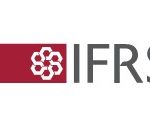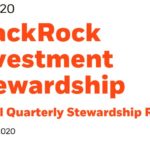The Global Reporting Initiatives (GRI) Board of Directors unanimously approved the G3 Guidelines last week, indicating an on-schedule progress for the Guidelines international release, which will mark new era in the evolution of both the GRI and sustainability reporting.
The 100% approval vote from the Board concludes the G3 Guidelines development process, which involved a unique multi-stakeholder engagement approach of over two years consultation and engagement with upwards of 4000 people globally, in formal and ad hoc ways. Also advising the Board to concur with the Guidelines were the Technical Advisory Committee (TAC) and the Stakeholder Council (SC) two other of the GRIs key governance bodies. Although some members of these bodies did dissent, the majority vote indicated a concur approval for the Guidelines release.
Before making their decision the Board considered and resolved four recommendations that arose from the Stakeholder Council. A brief summary of the issues and how they were resolved follows:
1. Application levels:
SC issues: the SC workshopped the criteria for the levels for several hours and made many advancements. There were three issues that they just could not resolve, two were about some of the so-called ‘disclosure items’ in the G3 and whether or not some of them should be included in the lowest level or not. In voting sessions they ended in a deadlock so had to defer the decision to the Board. The other issue was the naming of the levels, currently in the draft they are known as C, B, and A levels, but through discussions they could not come up with a better alternative, so they also deferred to the board for further discussion.
Board resolution: The board discussed the criteria and naming for the levels in great detail. Eventually it was resolved that although not ideal, the naming of C, B and A was the best option in terms of global understanding and translation needs. The Board resolved to keep some of the contentious items in the lowest level, and decided to move others out into the mid-level. On the whole it was decided that the main principle was to ensure the lowest level was a fair but easy starting point for new reporters.
2. Indicator SO1:
SC issues: Some members, especially those from emerging markets, felt strongly that this indicator on community impacts was too general. They suggested some edits be made to the protocol to provide illustrative examples of the types of impacts a reporting organization would be expected to include in their response. The board will have to consider whether or not it is within the scope of the rules and procedures to make these ammendments at this late stage.
Board resolution: After reviewing the proposed ammendments to the indicator protocol the Board noted that, in principle, the suggested change was one that should have come in via the public comment period, but in practice, it was basically a text clarification, so it did fall within their remit to make the adjustment.
GRI is a Collaborating Centre of the United Nations Environment Programme
3. Transition period:
SC issues: It was noted that there are now nearly 1000 organizations that have used the 2002 Guidelines to report, and 20% of these have done so at the "in accordance" level. The SC recommended to the board to take actions for a transition phase so that organizations could smoothly move from G2 to G3 reporting over time.
Board resolution: The board decided to ensure GRI would continue to recognize reporting based on the G2 Guidelines for a further two full reporting cycles after the release of the G3 in order to provide ample transition time for existing reporting organizations. Any new reporting organization would be expected to begin with the G3 upon its release. Other guidance and advice was also agreed to be communicated at the time of launch about making the transition. 4. Human rights and community indicators:
SC issues: Members noted that the indicators in these sections were still not as robust and mature as they would have liked to see, but recognized that they do reflect the best knowledge, experience, and understanding of how to report on these issues to-date. With time and further experience the SC recommend that these be areas for improvement as a future priority.
Board resolution: The board instructed the Technical Advisory Committee to outline a detailed work plan for the next three years, and to make these two items a priority. The TAC is to make their work plan public and open, and it will be discussed at the next joint Board/SC meetings in February 2007.
In general, the major elements in the approved G3 include a stronger focus on reporting principles, the support of protocols for every indicator, a new architecture to disclose management approach, and greater emphasis on clarity and materiality.
Chair of the GRI Board, Judy Henderson, states the emphasis on process guidance will help reporters produce better, more comparable reports, thereby raising the overall standard of sustainability performance information that organizations disclose and that stakeholders and the general public can access.
These new G3 innovations respond to the growing sophistication of the sustainability reporting field, stemming from the accumulated intellectual capital and diverse experiences of nearly a decade of sustainability reporting by diverse sectors, worldwide.
G3 innovations such as principles and protocols will help create technically sound, more comparable reports: issues where sustainability reporting has perceived to have historically struggled.
TAC Chair and GRI Board Member, Roger Adams, said "the technical strength of the G3 – supported by informed use of the materiality concept and the introduction of a new Application Levels framework – makes the Guidelines clearer, more credible, and far more user-friendly."
The G3 Guidelines GRIs third generation since the inaugural version in 2000 build on the globally acclaimed 2002 Guidelines (G2), which an estimated 1000 organizations worldwide used to report on their sustainability performance and have resulted in the GRI being largely attributed as the global de facto standard-setter for sustainability reporting.
As with all GRI products, the G3 Guidelines are subject to continuous improvement. Looking to the future, GRI Chief Executive Ernst Ligteringen reinforces the commitment to incremental improvement in the Guidelines over time in response to the worlds experience with them. In the meantime, he asserts that the G3 reflects two things: the closest the GRIs worldwide stakeholders could come to consensus on what a sustainability reporting framework should look like; and our best knowledge and experience with reporting on sustainability issues thus far. The resulting G3 is the best framework to exercise external transparency in stakeholder relations, whilst also providing a framework for users to generate reports that help them monitor and assess the effects of their sustainability performance on their organization.
The G3 Guidelines will be released as part of a major international event on sustainability and transparency on October 4-6, 2006.
The G3 Guidelines are embargoed until their international launch on October 5, 2006 at the event in Amsterdam.



